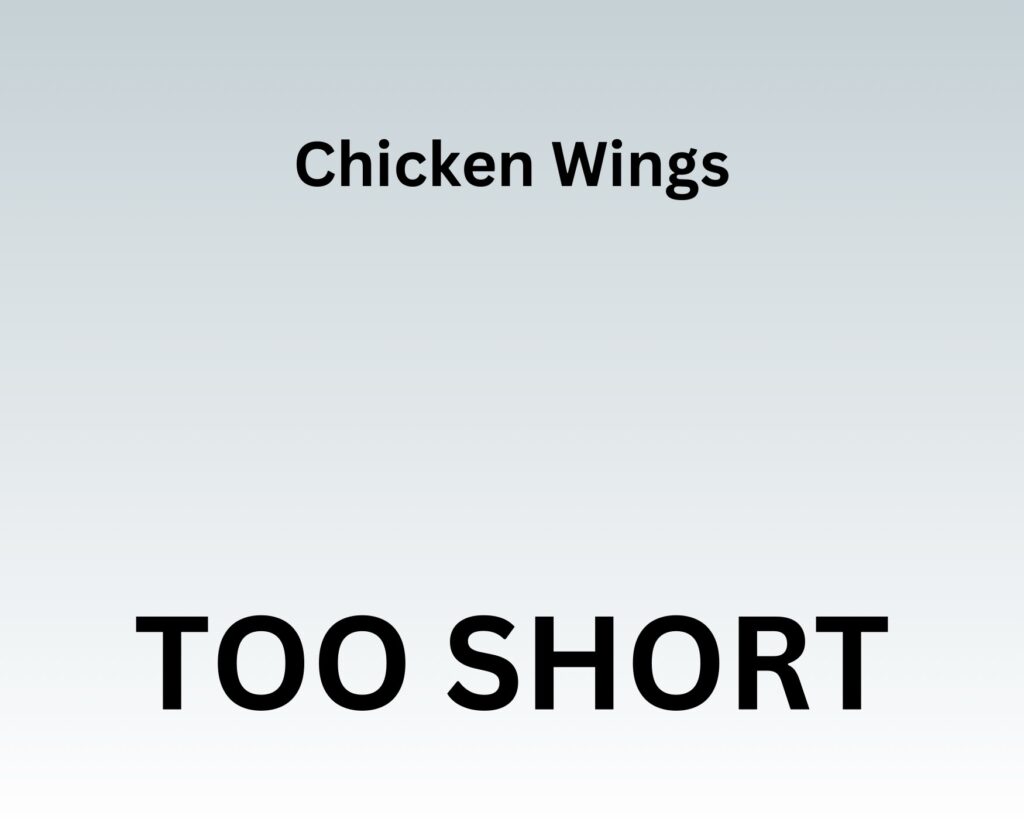The Importance of Title Length in SEO
In the intricate dance of Search Engine Optimization (SEO), every element plays a crucial role, and none more so than the title of your web page. It’s the first impression, the initial handshake with your potential reader, and a critical factor in search engine rankings. But how long should this crucial component be? Is there such a thing as too long or too short when it comes to SEO titles?
The length of your title can significantly impact how search engines and users perceive your content. A well-crafted title should be long enough to convey the necessary information and include relevant keywords, yet concise enough to be easily digestible at a glance. It’s a balancing act – providing just enough detail to entice and inform, without overwhelming or omitting key information.
Search engines like Google often display only the first 50–60 characters of a title in the search results. This limitation means that titles which are too long may get cut off, potentially losing vital information that could capture a user’s interest. On the flip side, titles that are too short might not provide enough context or keyword richness to rank effectively for relevant queries.
The ideal title length is more than just a number of characters; it’s about making those characters count. A title should be a compelling preview of the content, an invitation to the reader, and a strategic tool for search engines. In this article, we’ll delve deeper into why title length matters and how you can hit that SEO sweet spot.

The Risks of Too-Long Titles
When it comes to SEO titles, more isn’t always better. Long titles come with their own set of risks, potentially hindering your SEO efforts rather than enhancing them. Understanding these risks is key to crafting titles that effectively contribute to your SEO strategy.
1. Cut-Off in Search Results: Search engines like Google typically display the first 60 characters of a title. If your title is too long, it risks being truncated in the search results. This truncation can result in the loss of critical information or keywords that might have drawn a user’s click. Imagine a title cut off mid-sentence – it’s not just unappealing, but it also fails to convey the full message of your content.
2. Keyword Dilution: Long titles often try to cover too much, resulting in diluted keyword focus. SEO thrives on specificity and relevance. When a title is crammed with multiple ideas or keywords, it loses its punch. The lack of a clear, focused keyword or phrase can diminish the title’s relevance to specific searches, reducing its chances of ranking well.
3. User Experience and Engagement: From a user’s perspective, long titles can be overwhelming and off-putting. Internet users typically scan content quickly, and a title that’s a chore to read is more likely to be skipped. A concise title that clearly states what the content is about will more effectively capture and retain user interest.
4. Sharing on Social Media: Social media platforms have their own limitations on character count. Overly long titles may get truncated when shared, losing their effectiveness. In the social media age, where sharing content is key to amplification, a snappy, concise title is more shareable and likely to generate engagement.
In summary, while it’s tempting to pack your title with as much information and as many keywords as possible, this approach can backfire. The art lies in creating a title that’s long enough to inform but short enough to engage, a topic we’ll delve into next as we discuss the downside of too-short titles.

The Downside of Too-Short Titles
While brevity can be a virtue in many aspects of writing, an SEO title that’s too short might miss the mark. Understanding the pitfalls of undersized titles can help you avoid inadvertently weakening your SEO efforts.
1. Missing Out on Keywords: One of the primary functions of an SEO title is to incorporate relevant keywords that align with what your target audience is searching for. Too-short titles may not provide enough room to include these vital keywords, reducing the chances of your content appearing in relevant searches.
2. Lack of Context and Clarity: A title is a brief opportunity to convey to potential readers what your content is about. If it’s too succinct, it may fail to provide enough context or detail, leaving users guessing about the content’s relevance to their needs or interests. This lack of clarity can lead to lower click-through rates, as users are more likely to bypass a title that doesn’t clearly articulate what the article is about.
3. Underutilizing SEO Potential: SEO titles are a powerful tool for enhancing your content’s discoverability. A title that’s too short might not fully leverage this potential. It’s not just about including keywords; it’s also about crafting a title that engages and informs. A title that’s too brief may come across as vague or generic, reducing its ability to stand out in a crowded digital landscape.
4. Affecting User Engagement and Sharing: The title of your content is often the first thing users will see on social media or in search results. If it’s too brief and lacks appeal, it may not capture the attention of your audience, reducing engagement and sharing. In the digital age, where content virality can hinge on a title, ensuring your titles are compelling and informative is key.
In summary, while keeping titles concise is important, going too short can be just as detrimental as being too long. Striking the right balance is crucial. Next, we will explore the best practices for finding the ideal length for your SEO titles, ensuring they are neither too long nor too short, but just right.

Finding the Ideal Length: Best Practices in SEO Title Crafting
Identifying the perfect length for your SEO titles is more art than science, blending brevity with informativeness. Here we delve into best practices to help you strike that delicate balance, ensuring your titles are optimized for both search engines and user engagement.
1. Aim for Character Count Sweet Spot: While there’s no one-size-fits-all answer, a good rule of thumb is to aim for titles between 50 to 60 characters. This range typically avoids the risk of truncation in search results and allows enough space to include relevant keywords and convey a clear message.
2. Prioritize Clarity and Relevance: Before length, consider clarity and relevance. Your title should clearly reflect the content and resonate with what your target audience is searching for. Start with your main keyword or phrase and build your title around it in a way that naturally appeals to readers.
3. Incorporate Keywords Strategically: Place your most important keywords towards the beginning of the title. This placement not only catches the reader’s attention but also aligns with search engine algorithms that tend to give more weight to the beginning of the title.
4. Balance SEO and User Engagement: While keywords are crucial for SEO, don’t overlook the human element. Your title should entice and intrigue readers. Use actionable language, ask questions, or create a sense of curiosity to encourage clicks.
5. Test and Tweak: SEO is an evolving field, and what works today might not work tomorrow. Regularly test different title lengths and formats to see what resonates best with your audience and performs well in search results. Use tools like Google Analytics and A/B testing to inform your decisions.
6. Adapt for Social Media: Remember that titles often serve double duty as social media headlines. While SEO is important, so is shareability. Craft titles that are not only search engine friendly but also compelling and share-worthy on social platforms.
7. Avoid Fillers and Fluff: Every character in your title should serve a purpose. Avoid unnecessary fillers or overly flowery language. Keep it straightforward, informative, and engaging.
In essence, the ideal SEO title length isn’t just about hitting a specific number of characters. It’s about creating a title that effectively balances SEO best practices with the ability to captivate and engage your target audience. As we analyze real-life examples in the next section, we’ll see how these principles play out in practice.

Real-Life Examples: The Impact of Title Length on SEO Success
Analyzing real-life examples can offer valuable insights into how title length impacts SEO performance. Let’s examine a few cases to understand better how the principles of title crafting play out in the digital world.
1. Example of an Overly Long Title: Consider a blog post titled: “The Comprehensive Guide to Starting Your Own Organic Garden in the Backyard for Beginners Who Want to Grow Their Own Food.” While informative, this title is excessively long and likely to be truncated in search results. The essential keywords (“Organic Garden for Beginners”) are lost in the length, diluting the title’s effectiveness.
2. Example of a Short but Ineffective Title: On the other hand, a title like “Garden Tips” is too vague and short. It lacks specificity and doesn’t utilize the available character space to include important keywords like “organic,” “beginners,” or “food growing.” Such a title might get lost in the sea of more descriptive competitors.
3. Balancing Length and Clarity: Now, consider a revised version: “Beginner’s Guide to Organic Gardening: Simple Steps to Start.” This title is concise, clear, and includes relevant keywords. It provides enough context to attract the right audience without being cut off in search results.
4. Impact on Click-Through Rates: Titles that strike the right balance often see higher click-through rates (CTR). For instance, a study showed that concise titles with clear value propositions and relevant keywords outperformed longer, ambiguous titles in terms of CTR and engagement.
5. The Role of A/B Testing: Some websites have conducted A/B testing with different title lengths, revealing that titles optimized for clarity and relevance (regardless of their length within reasonable limits) performed better in SERPs (Search Engine Results Pages).
These examples underscore the importance of crafting titles that are not only SEO-friendly but also resonate with the audience. The key takeaway is the need for a strategic approach to title creation, considering both SEO and user engagement factors.
Crafting Titles for Maximum SEO Impact
As we conclude our exploration of the ideal length for SEO titles, it’s clear that the sweet spot lies in a title’s ability to be both informative and engaging. Striking this balance is key to enhancing your website’s visibility and attracting the right audience. Remember, an effective SEO title is your first opportunity to communicate the value of your content to both search engines and potential readers.
Incorporating what we’ve learned about title length is just one piece of the broader SEO puzzle. To dive deeper into optimizing your website, check out 🔍 Mastering SEO: Best Practices for Optimizing Your Website. This resource provides comprehensive insights into various SEO strategies that can elevate your site’s performance.
Additionally, understanding the overall significance of SEO in the digital landscape is crucial.
For a comprehensive look at why SEO is vital for your website’s success, don’t miss 🌐 The Importance of SEO for Your Website’s Success. This article will give you a broader perspective on how SEO can be a game-changer in achieving your online goals.
In summary, while the perfect length for an SEO title might vary, the principles of clarity, relevance, and user engagement remain constant. By applying these best practices, along with the insights and strategies from our other resources, you can create titles that not only captivate your audience but also drive your website’s SEO success.
Balancing Keywords and Readability: How do you incorporate keywords without compromising the readability of the title? It’s about finding natural ways to include keywords that flow with the title’s narrative. Use synonyms and variations to avoid a stilted or forced feel.
Impact of Title Updates on SEO: What happens if you change a title after publication? Updating titles can refresh your content’s appeal and improve SEO. However, frequent changes can confuse search engines and users, so it’s best to limit updates to necessary improvements.
Title Tags vs. H1 Tags: How do titles differ from H1 tags in SEO? While they can be similar, your title tag is what appears in search results and browser tabs, whereas your H1 tag is the main heading seen on the page. Both are important for SEO but serve slightly different purposes.
Localization of Titles: Should you localize titles for different regions? If your website targets multiple regions or languages, localizing titles can improve relevance and engagement in each specific market.
The Role of Branding in Titles: How important is it to include your brand name in the title? Including your brand can enhance recognition and trust, especially if you have a well-established brand. However, it should not overshadow the primary message of the title.
SEO Title Tools: Are there tools to help craft better SEO titles? Yes, there are various tools available that can analyze title effectiveness, suggest improvements, and help you understand how your titles might perform in search engines.
By addressing these aspects, you can further refine your approach to creating SEO-friendly titles, enhancing both the discoverability and appeal of your content.
As an Amazon Associate we earn from qualifying purchases through some links in our articles.




